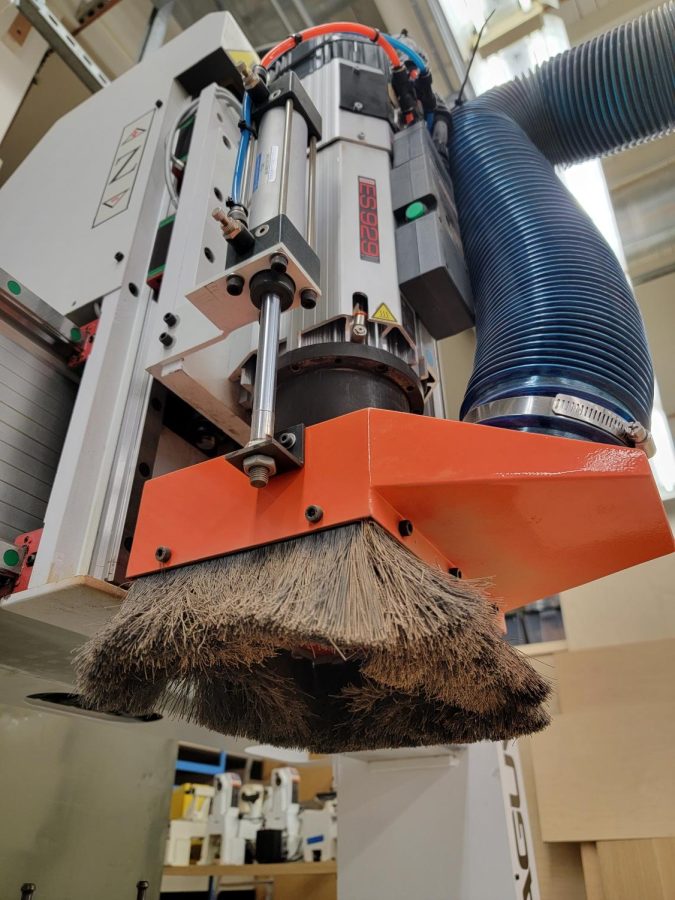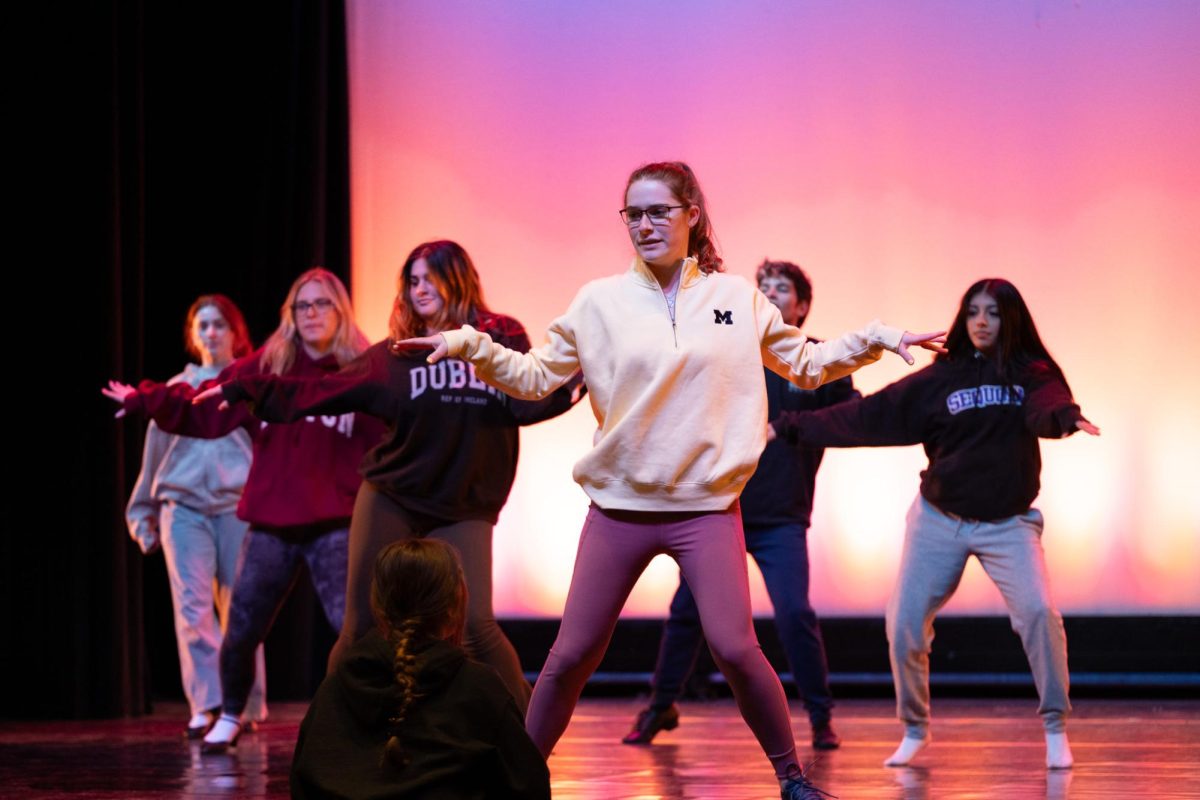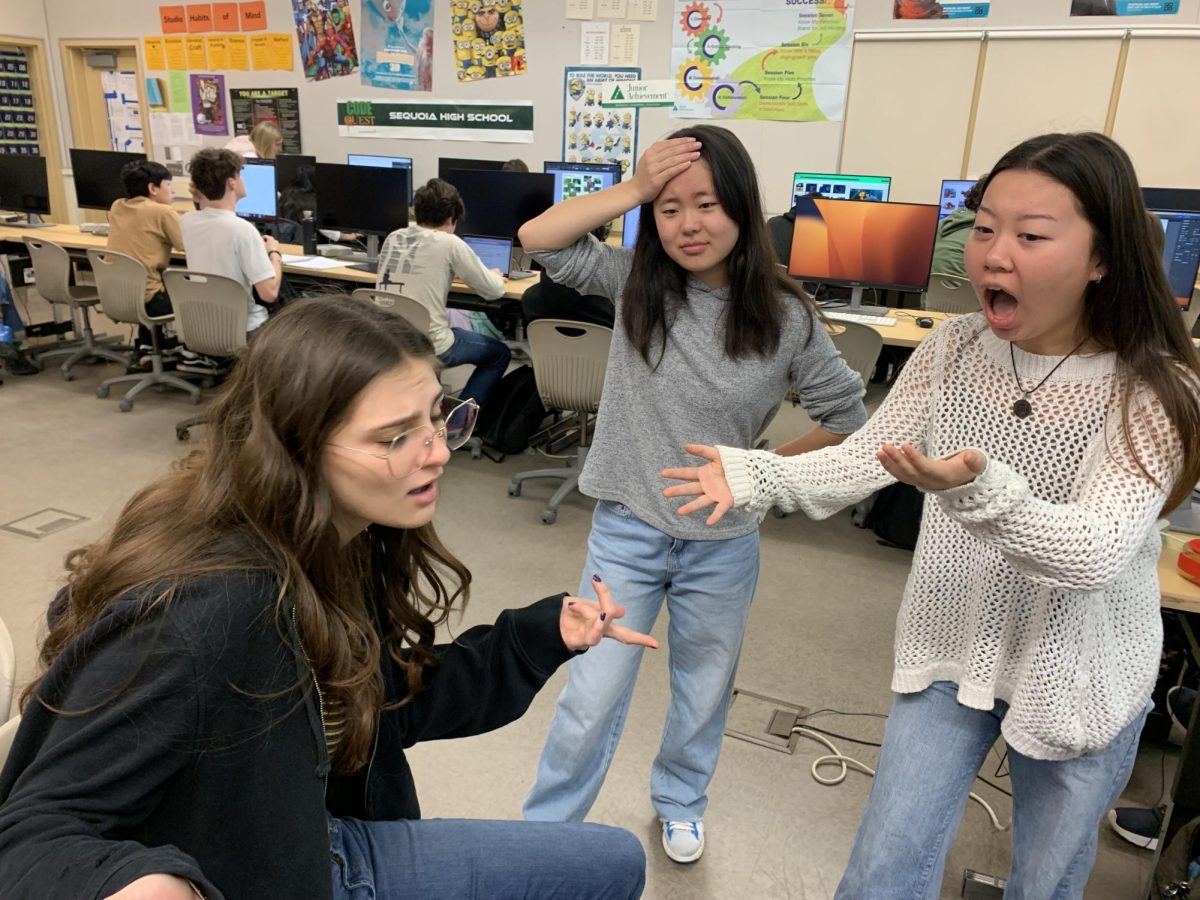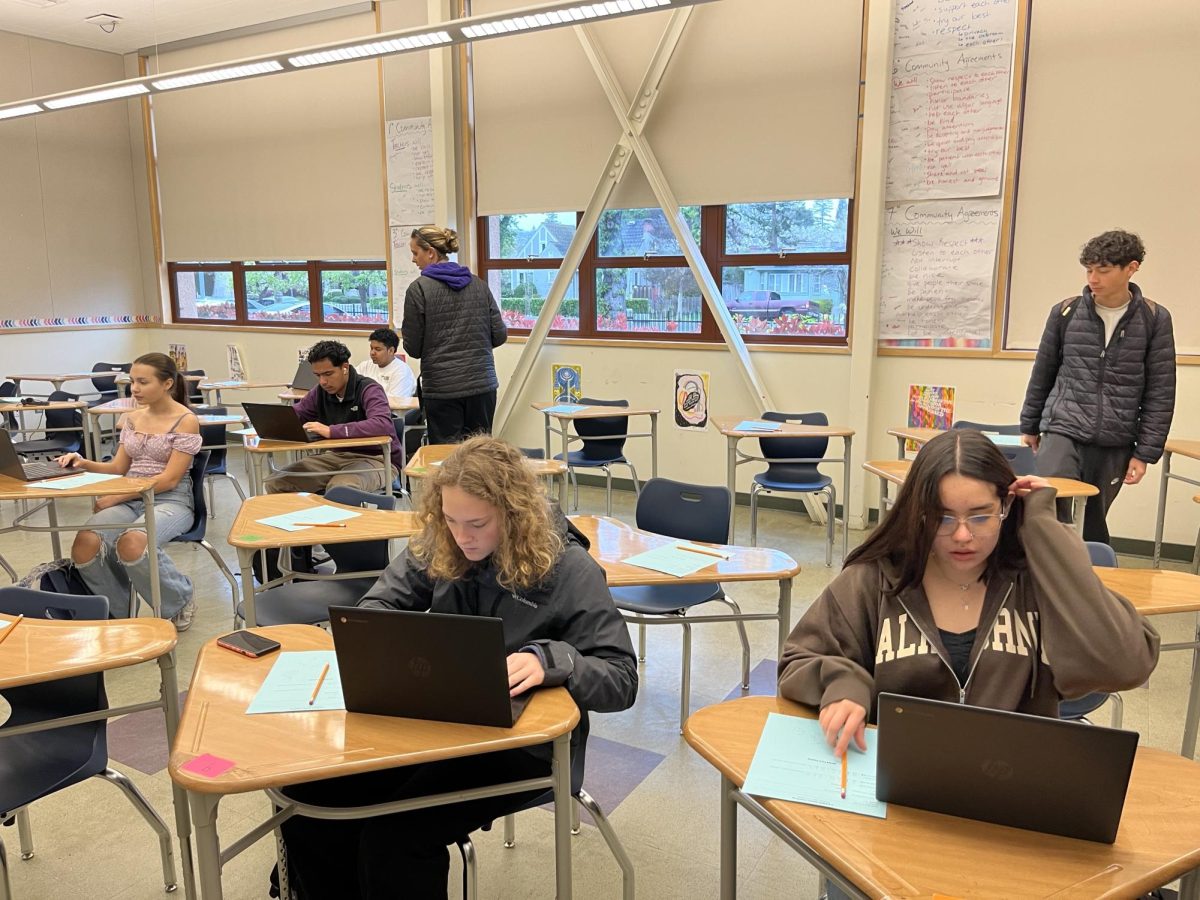Funding Sequoia Arts
Woodshop machines like this are paid for in-part by fundraising.
December 15, 2022
Last band concert, a clarinet fell and shattered on the floor. For many students, this would have been an easy solution: buy a new one. However, there is a lot more to the process than initially meets the eye. Using school funds for instruments is complex, and getting those funds is even more difficult. For many students within band and other classes, destruction of class materials is a common occurrence.
The unique challenges and demands of these classes often warrant unique funding challenges, which can often vary in sufficiency depending on the year. Classes like ceramics, drama, woodshop, band, and other arts classes all require different class materials and actions by teachers.
One of the greatest challenges within these classes is funding. Many items and class materials in these classes are very expensive, ranging to above the normal prescribed department funding of about $1000.
“There are a lot of unanticipated needs in band class. For band and guitar, the amount of students change year from year. It depends on how much is breaking. It depends on what instruments students play,” Jane Woodman, the band director at Sequoia, said.
The elasticity of the demands of the band are harder to adapt to than routine purchases. Since the financial constraints of the band vary from year to year, department funding can often be completely sufficient for some years, but not enough the next.
“[When I taught English], if my stapler broke, or I needed some ScanTrons or something, I could just go down to the office and they would be there. With band […] there’s a lot more need, in terms of […] if you need a specific new instrument or there’s a lot of students coming in,” Woodman said.
The Sequoia Foundation is an organization, closely related to the Parent-Teacher Student Association (PTSA), that is funded through donations and fundraisers. The Foundation gives away money to suit the needs and pressures of education at Sequoia.
“The Foundation works for both the visual and performing arts classes, as well as some core classes,” Christle Waters, the Department Chair of the Arts Department, said.
Band gets funding through a variety of ways, mainly from two sources, the Foundation and the normal department funding. Normal department funding works very similarly to the department funding of a normal class, say English, which provides a set amount every year for different supplies. In contrast, the Sequoia Foundation funding provides a much more fluid income stream, designed to be fit for the different demands of band classes.
The regular department funding is small in comparison to the Foundation funding.
“I think that we’ve gotten $2000 [more], [over the past ten years], but for thirty classes over ten years, I guess they did it for [inflation],” Christle Waters said.
This continues to highlight the importance of the Foundation in many arts classes, as the regular department funding can often be insufficient.
“We rely on the Foundation for a lot of funding, because a lot of our department funding is insufficient for a lot of our materials and activities,” Waters said.
These different sources of funding fund different things in the band.
“For instrument repairs, which make up a lot of our expenses, Sequoia Band relies on the Sequoia Foundation for a lot of the money,” Woodman said.
However, this Foundation money, while sufficient in most cases, is auxiliary and not as formal as department funding. This is needed for a lot of arts classes, as the demands of these classes are much more spontaneous than regular, core classes. This is much the same story in many visual and performing arts classes at Sequoia. Department funding is insufficient for many of these classes, and they are forced to rely on the Sequoia Foundation.
Many Sequoia arts departments get a lump sum from the Foundation and divides it amongst the staff. There are eight arts teachers who all teach a variety of classes, so the money is divided based on how many students are being provided for and assisted by the money.
The department funding splitting seeks to ensure equity amongst all classes. However, this has not always been the case.
“When I first arrived at Sequoia, the performing arts classes got more than the visual arts classes but I helped to change that,” Waters said.
For other classes that require funding other than Arts, funding can often be much different. For example, in many Career Technical Education classes (CTE), there are federal grants available. One particularly notable grant is the Carl Perkins fund, which is distributed to classes across the state.
However, recently, CTE classes like woodshop have chosen not to apply for the Perkins grant, as opposed to previous years.
“I only have so many units of time and energy. Where can I apply my limited amount of extra time and energy for the biggest impact on the Woodshop program and its students? In the past, I’ve sought CTEIG and Carl Perkins funding. Most recently, individual donations and private foundations have had a larger impact.”
This differs from other classes, such as ceramics, where classes are not even allowed to fundraise. Without the assistance of the Foundation, classes like Woodshop have to find alternative means to raise money. This highlights the difference in funding for many different departments, as they all differ in methods and needs.
However, the reliance of art classes on the Foundation may change in the coming future. The most recent midterms election included a CA state proposition about guaranteeing funding for music and arts funding in California’s public schools. The proposition, CA Proposition 28, states that it “Requires K-12 public schools to spend at least a certain percentage of their funds on arts and music programs,” according to the Associated Press.
However, the impacts of this on the Sequoia school district are still unclear.
“There’s a lot of bureaucracy and layers it has to pass through. It’s great that it passed, but how they actually figured it all out is unclear, and I think it’s going to be a while until we see real money,” Woodman said.
However, the primary area of impact for this is likely not going to be Sequoia.
“From what I’ve heard, a lot of the money is concentrated towards alleviating staff shortages in elementary and middle schools,” Waters said.
This means that while Sequoia will likely be getting some funding, it will not be a large amount. While this will supplement the department funding, the department funding pales in comparison to the Foundation money.
The differences between the various non-core classes all highlight an area of education that is not typically seen to students. Despite this, funding is more important than ever, and so are the differences in the funding of each class.






